(or Triads, Trimurties, Triple Deity, Triunities, Trebles, Triangles, Triskelions, etc...?)
Correlations, Coincidences, or Compatible connections of a comparative cognition?
| 1st of 1st | 2nd of 1st | 3rd of 1st |
| 2 | 3 | 4 |
| 5 | ||
~ The Study of Threes ~
http://threesology.org
Visitors as of September 13th, 2024
Whereas I could begin this page with a specific reference to one or another threes-related word, a reference to the word "three" in a numerical form should also be addressed, particularly in light of my encounter with a mathematician's perspective commenting on the recurrence of "threes" in the context of Why Do We Believe That Catastrophes Come in Threes?. While the article does in fact provide ample evidence that people can and do seek out given patterns, with and without flexible constraints that they sometimes need to shoe-horn into place, the article did not try to explain why the usage of three is so robust, just as is the small set of number patterns one may collate into a graph.
|
At this point, let me interject a comment concerning those who are writing a response to someone discussing the recurrence of the number three... in that they usually end or begin a reply by making the statement that any number pattern can be found if you look for it. Let me emphasize that THIS IS IDEA RANKS AS AN URBAN LEGEND! You can not find any pattern if you look for it. For example, try the number pattern "256974123586", which occurred by randomly punching the number keys on a key board. Other than this singular occurrence, it may be quite difficult to find the pattern... much less multiple instances of it. In short, let me emphasize: YOU CAN NOT FIND ANY NUMBER OR OTHER PATTERN JUST BECAUSE SOMEONE SAYS YOU CAN. Those who are saying this have not actually thought about what they are claiming and only do so perhaps because they are mimicking what they have heard or read someone else expressing this sentiment and feel safe in saying it since no one has responded to such a comment with any reasonable alternative consideration that is easily understood and identifiable by most people without too much effort being required for such an examination. Let us take for example those who use a give pattern everyday yet are oblivious to its existence, the fact that they don't, by behavioral convention, identify such a pattern because they are unaware of its existence— attests (technically) to the point they can not find any pattern. And if we define pattern as structure, we are unable to find the pattern of a cell without the aid of some instrumentation such as a microscope or electron microscope. Thus, using the expressed generality that "any pattern can be found if you look for it", is not really true under the conditions of certain circumstances. In other instances, we find patterns or the existence of some item that we were not aware of, such as in the case of atomic particles which reveal themselves in experimentation but were not configured in any mathematical model. I don't care if they are a mathematician, pseudo-intellectual or someone trying to portray some sort of insightful acumen by reiterating the blogged comment that any pattern can be found if you look for it. The point to make is that there are not only certain patterns which have a recurring frequency, even if we include future astronomical events such as the precession of the equinoxes or the more frequent circadian rhythms, we are left with visible images displaying a short bar on a bar graph. Whereas there are different patterns to be found in multiple subject areas, not many show up in multiple subject areas. Like DNA which appears to be in most life forms, there are only a few patterns (thus far identified) which show up in multiple subject areas. However, if we were to arbitrarily assign a number such as 658789 to reference lines, or 14923 to reference circles, and 9916835745623498123 to reference triangles, then we could say that such numbers have a high frequency of occurrence, because these patterns occur in multiple subject areas. Again, there are only a few number patterns which appear to occur with a large frequency. The reason(s) for this appear to be the result of an incrementally deteriorating environment which is imposing itself on us so as to enforce a demand that we continue to adopt the present on-going model of adaptation for purposes of maintaining some semblance of equilibrium on a course of extinction by using a methodology that I refer to as "making rationalized adjustments" in our life styles, which necessarily means altering our business, political and religious beliefs, as well as our world-view... so that an acceptance of the deterioration is incorporated into our individual and collective philosophies of life, love, living, etc... So if you find someone claiming that any number or other pattern can be found if you look for it, please use the following three-patterned comment in response: Go jump in the lake, swallow a snake, and come out with a belly ache. They honestly do not fully appreciate what they are trying to comment on. |
Let me provide a short hypothetical graph concerning various number patterns (not including the three basic geometric patterns of line-circle-triangle), as a means of illustrating, in general, the small quantity of recurring patterns-of-number out of all the trillions of numbers which exist:
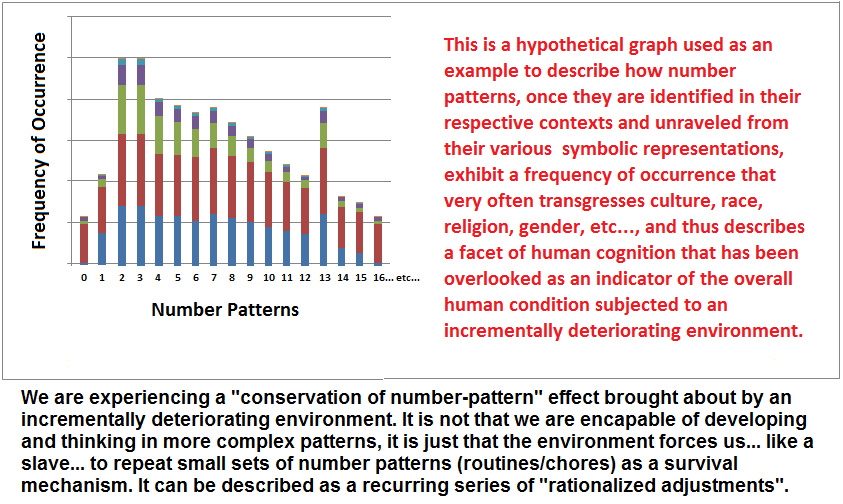
Another type of graph that should be included is that which expresses human cognition with respect to geographical symbolization. For example, no doubt in different contexts you have encountered information which describes a settlement or eventual city having begun alongside a single river such as the Nile or Ganges, while at other times a single river (such as the Amazon) is used as THE major point of geographical reference. The same can be said for the usage of a single mountain, single mountain range or gorge, just as some drivers may use a single point of reference such as a business or building or statue or tree by which to identify and locate a particular place, or listen for the playing of a national anthem to identify a particular time of day, such as occurs when near a military base in the US. During other information encounters you may come across the usage of two-patterned geographical references such as when we find the (Greek) word "Mesopotamia" which means two rivers. With respect to the "two", (if I may be permitted a momentary digression), the phrase 'Never the twain shall meet' can be labeled part of a literary genre of cognitive mapping which includes the American reference of "Mark Twain". However, in saying "Half twain! Quarter twain! M-a-r-k twain!"... and describing "Mark Twain" as referencing 12 feet, it is of interest to note that Half and Quarter twains do not actually describe portions of the twelve feet, as the table below the following insert describes:
Lead Line
A weighted rope with marked increments that was used to measure the river's depth, mostly used on the Mississippi River. A sounding pole is generally used on the Ohio River. The cord is marked off into fathoms and fractions thereof: one fathom (six feet) is termed mark one; two fathoms is mark twain; three fathoms is mark three and four fathoms is mark four. Above mark four is no bottom. The person who takes the soundings with a lead line and calls them to the pilot is called the leadsman. The leadsman sang out the depth in a voice loud enough to be heard in the pilothouse.
Source: Steamboats.org
|
When a pilot "calls for the lead" he gives the command with a signal from the whistle or bell. Soundings are taken from either side of the boat, and when necessary from both sides. One signal from the pilot house sends a leadsman to the starboard (right) side, two signals to the larboard (left or "port" side). The same signals from the pilothouse recall the leadsman from his post. Soundings are taken at the discretion of the pilot, when making a crossing, going through seldom used chutes, or at any time when there is doubt regarding the depth of the water. When a leadsman is at work the pilot expects to be informed of the depth of the channel about ever hundred feet. Throughout the leadsman's chanting, pilots listen hopefully for "No Bottom." To them this is the leadsman's sweetest song. When a boat can be kept in deep water the danger of going aground is avoided. - Steamboatin' Days - Folks Songs of the River Packet Era, Mary Wheeler. Louisiana State University Press, 1944. |
 Quarter Less Twain - ten and one-half feet Mark Twain - twelve feet (two fathoms) Quarter Twain - thirteen and one-half feet Half Twain - fifteen feet Quarter Less Three - sixteen and one-half feet Mark Three - eighteen feet (three fathoms) Quarter Three - nineteen and one-half feet Half Three - twenty-one feet Quarter Less Four - -twenty-two and one-half feet Mark Four (or Deep Four) - twenty-four feet (four fathoms) No Bottom - over twenty-four feet Source: Samuel L. Clemens' Steamboat Career |
In as much as some readers get caught up in literary accounts of repeating cognitive patterns that, for the most part, may go unrecognized much less labeled as a recurring cognitive pattern or deciphered in the context of a larger depth and breadth of other subjects, this genre of consideration should not distract one from taking an assessment of geographical representations of human cognition. From the "two rivers" example one can cite references in which three rivers are used as geographical points of recurring reference such as Trois-Riviéres Three Gorges, and Three Mountains are three (from China) examples. In terms of more than three, at least in the Jewish reference to Four Rivers, it appears to be a confabulated creation using the number 4 intermixed with religious dogma, even though four actual rivers may indeed have been referred to. In other words, it was made up to promote a religious perspective. Another example of a contrived "four" geographical reference is that referred to as the four corners region of the United States (Utah, Colorado, New Mexico and Arizona meet). Another contrivance, which I place here because it just came to mind, is that of the "seven toothed grill" on the front of a Jeep, which references it as the first vehicle having been to seven continents. While there is a reference to "Four Rivers" on the internet, not much else surfaced during an initial cursory query.
While I could find references to five, six, seven, eight (Spanish: ocha) and nine rivers, upon reaching the 10th, I was met with a reference to When Rivers Collide: 10 Confluences Around the World. In short, as with geographical points of reference which represent an area of human cognitive grouping behavior that is largely overlooked, what is to be found is yet another form of limitation. In other words, the geography of Earth imposes itself on human cognitive development. If there were multiple references to 11, 12, 13, 14, 15, etc., rivers, gorges, mountains, etc..., humans might well have a different model of brain. And even though there are millions of trees, insects, stars, fish, birds, etc., these do not customarily come into play as cognitively-linked geographical references... despite the usage of stars being grouped into constellations, that most of us quite probably don't know anyway. In short, though humans can conceive of larger number references, there is what appears to be an (environmentally) imposed limitation that we should not rationalistically defend, but come to appreciate as a tell-tale sign that it is a measurement of humanity's duration of existence... which is slowing ticking away.
There is a conservation of number that exists. It is, in other words... a limitation. It is not that we humans (and other animals) can not think or perform in larger numbers, it's that something in the environment enforces a rule-of-thumb to use a few small-number references again and again and again. Despite all the arguments and rationalizations to explain one or another recurring usage of a given number, the fact remains that our usage is limited. Identifying the existence of such a limitation is one of the steps enabling us to further identify whether or not the scope and duration of the limitation is changing in concert with the deterioration of the planet and solar system. From another vantage point, we can describe the usage as "set-creating-behavior". However, we often do not use the word "set". Instead, words such as group, spoon, gang, collection, compilation, city, state, country, nation, company, container, etc..., may be used to describe a set... even if the contents are not differentiated into numerically referenced items place together, alongside, or apart. Just because you may not routinely describe the amount of money you have in a wallet or purse as a set of a specific quantity, the behavior of creating sets appears to be a part of human nature... a nature dependent on the functionality of the environment. While different environments will influence the development of different types of named groupings, whether or not the users are aware that they are participating in such an activity, the numerical values appear to be a very small number that re-occur across nationalities. Much like the behavior that all infants babble in similar patterns irrespective of culture, so does the usage of some number patterns, even though some cultures are interpreted by cultural anthropologists to have a preference for one type of number usage over others. Physiologically and biologically, the patterns appear to remain constant, so long as there is an external environment which influences the development there of.
In other words, while it is true one can find different patterns by looking for them, some pattern uses appear to be more stable then others, and we don't find particular patterns everywhere, particularly the pattern of those who collate instances of many non-three patterns with an intent to discover... if possible, the existence of a reason or at least influence of what appears to be a small set of numbers being used as pattern identifiers. In other words, out of all the available numbers, we don't find a recurrence of large number- patterns, (patterns with number values such as 6,968, 13,245, 822, etc... The recurring patterns involve small numbers and only a relatively few of the these are used over and over again. A deteriorating planetary and solar system (as well as galactic) environment forces the usage of a small set of numerically identifiable pattern repetitions. The following example displays a negative effect of a triple repletion, but this should not be used to convey the idea that all such pattern forms are likewise undesirable. If this were the case, then we would have to say that the triplet coding in all of DNA and RNA is bad for us and all of life.

And even though we are unable to access the recurrence of number patterns used in the distant past proceeding to the present, an examination of our present day usage of patterns indicates that not only do humans engage in a small array of small numbers, as well as subject long strings of numbers to small sets of reference, but that the recurrence of such patterns across cultures gives us an indication of cognitive activity and ability, subject to the constraints of an incrementally deteriorating planetary system and planetary environment. As the deterioration continues, there might well be an alteration in pattern usage... irrespective of cultural embellishments including the perceptions and definitions used by one or another authority. Like religious authorities who come to believe themselves an authority on all or most or many things religious, the same attitude can be found among physicians, dentists, mechanics, mathematicians, psychologists, biologists, sports players, actors/actresses, mothers, fathers, business professionals, teachers, cooks, chefs, gardeners, etc. In other words, a mathematician's take on a recurring phenomena involving one or more numbers should not be viewed as if it were a sanctified "written in stone" edict being presented as the last word on a given subject, no matter how well provisioned and articulated. Religious leaders do not own the words God, Morality nor the Trinity, just as Physicists do not own sub-atomic particles, or Mathematicians numbers and number theory.
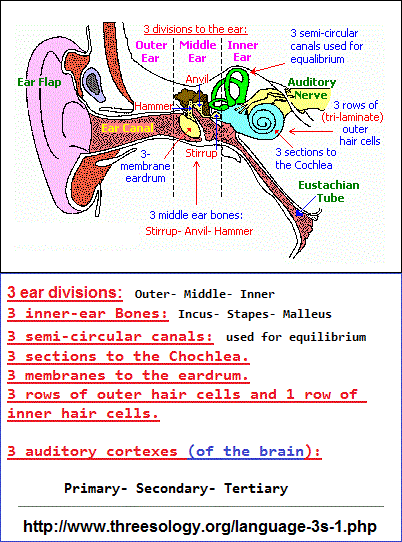
An excursion into a discussion of "three" as both a quantity and quality, necessarily involves a reference to both Language and its reliance on Hearing. If we look at the structure of the ear so closely connected to the brain and whose functioning is necessary to detect any problems which could interfere with developmental milestones in language and socialization where the primary, secondary and tertiary auditory cortexes come into play. With respect to the number of turns in the Cochlea: {1} "The number of human cochlear turns is generally accepted being 2 1/2, although cases with up to 2 3/4 or even 3 turns are known from literature." (On the number of turns in human cochlea.) {2} "It is a spiral-shaped cavity in the bony labyrinth, in humans making 2 turns(full) and a 3/4(3 quarters) turn around its axis, the modiolus". (Cochlea) {3} "The scalae wind around the modiolus ~3 times, defining apical, middle and basal turns". {Hearing and Balance}. The point to be made with hearing is that because there is a repetitive pattern-of-three associated with the ear and that many, many, many ideas also reflect this same pattern, it stands to consider that this pattern has an effect on language (just look at deaf people having a difficult time with the articulation of words), and that (as it has been previously proposed by others), language has an effect on ideas. If the ear exhibited a different recurring pattern, language as well as our ideas might well have a different recurring pattern. Take a look at the many pattern-of-three ideas in philosophy as a representative Trichotomy, which is a list which used to contain a reference to my earlier list (from which the idea arose): Threes Poster (5th column), after I had placed the list onto a Wikipedia page but someone connected with Wikipedia got the idea to exclude my contribution so as to give the impression that the author should be given credit for their "original" idea. These pattern-of-three ideas provide us with a tell-tale indication that either everyone is copying everyone else, or that there is "something" to the recurrence... though not necessarily the ideas be fostered by the originators of the different three-patterned ideas. Let's take a closer look at some of the three-patterned structures in the ear: | ||
3 Scala Turns |
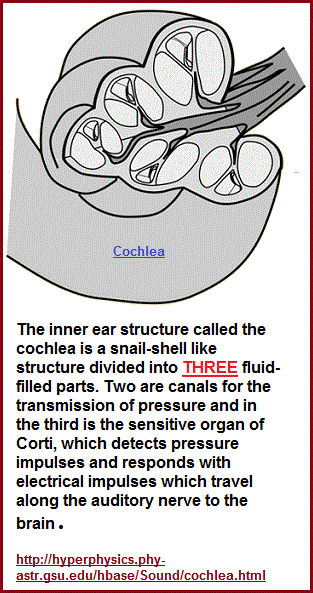 |
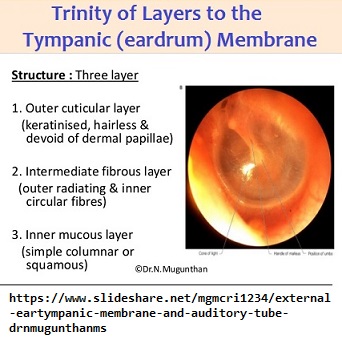 |
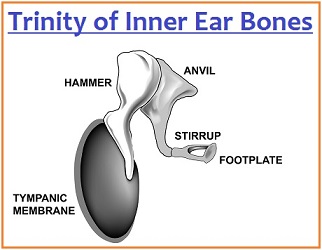 |
 |
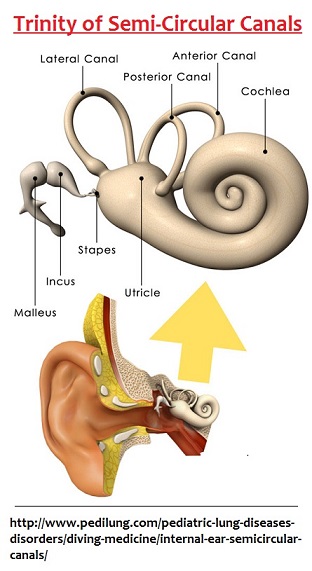 |
Page initially created: Friday, 17th August 2018... 4:36 AM
Page initially posted: Thursday, 13th September 2018... 8:33 AM
Updated posting: Friday, 13th September 20124.. 7:14 AM
Herb O. Buckland
herbobuckland@hotmail.com